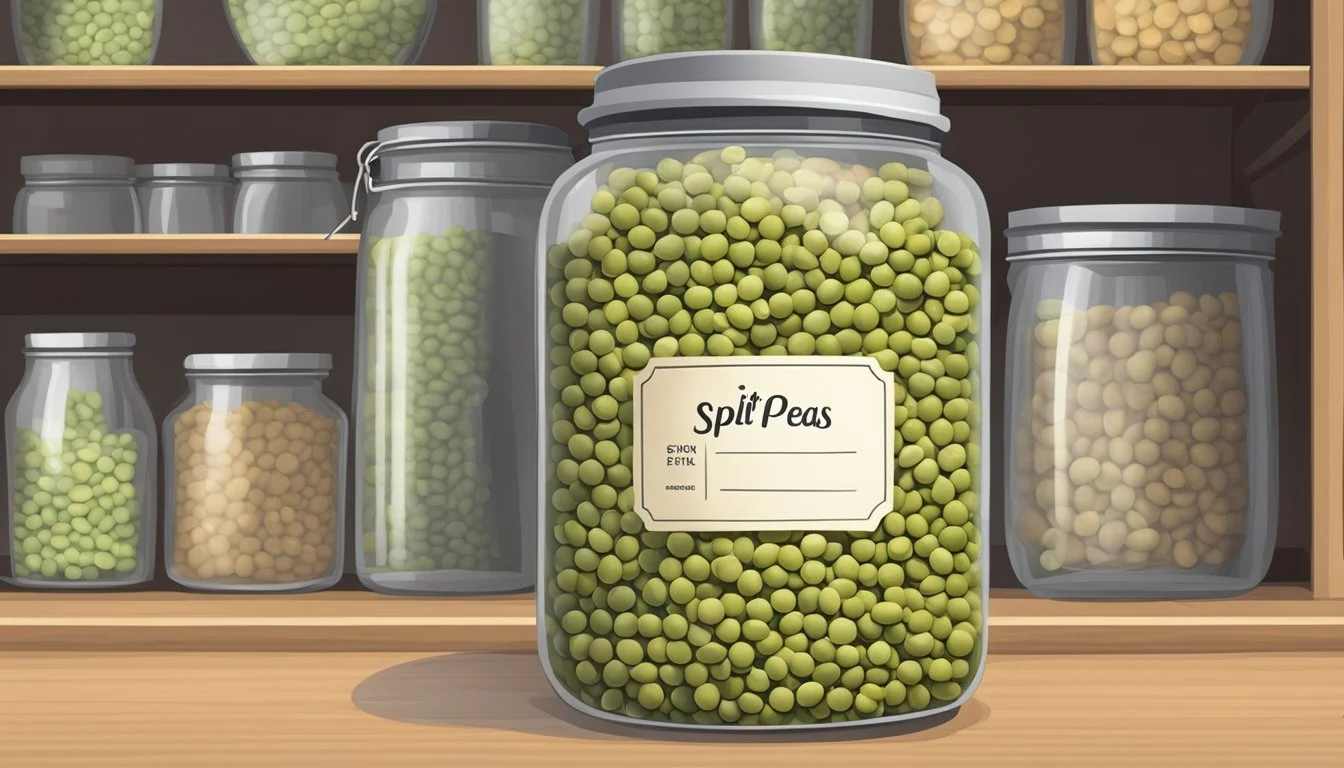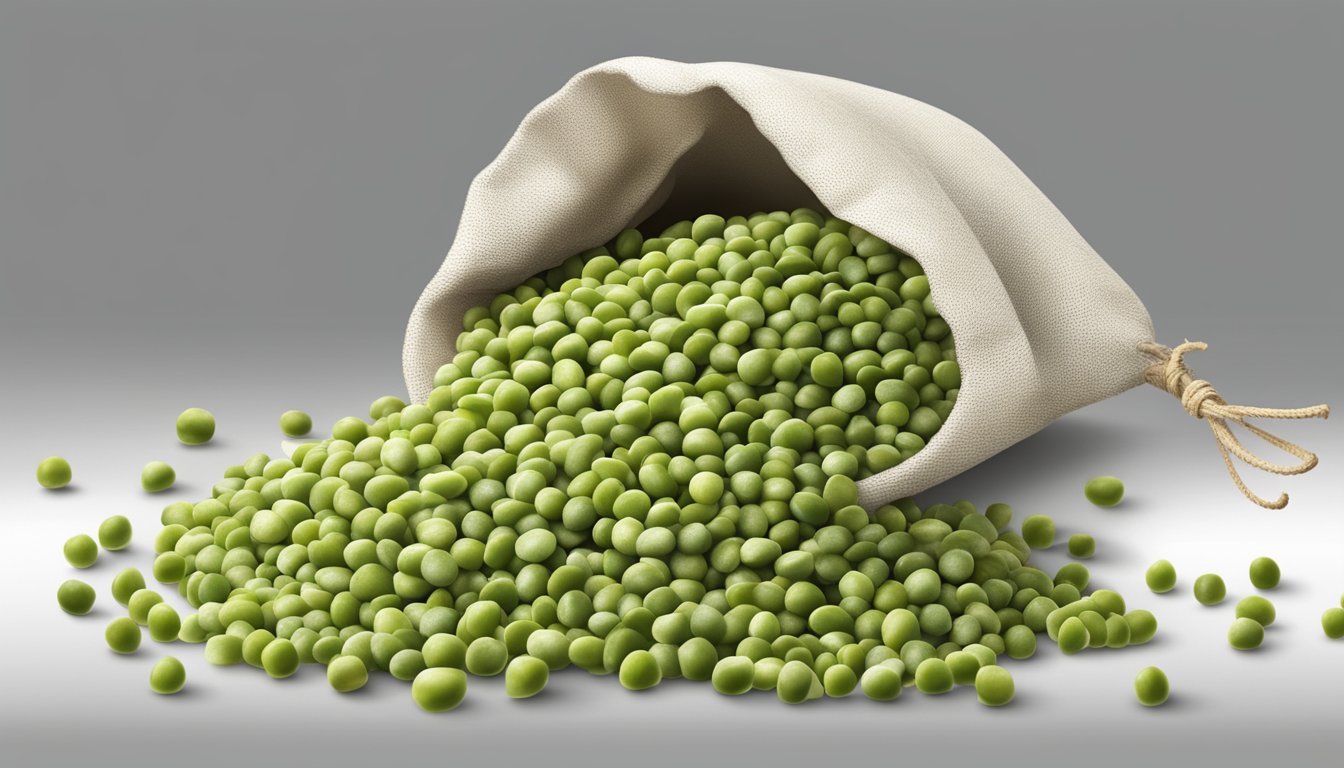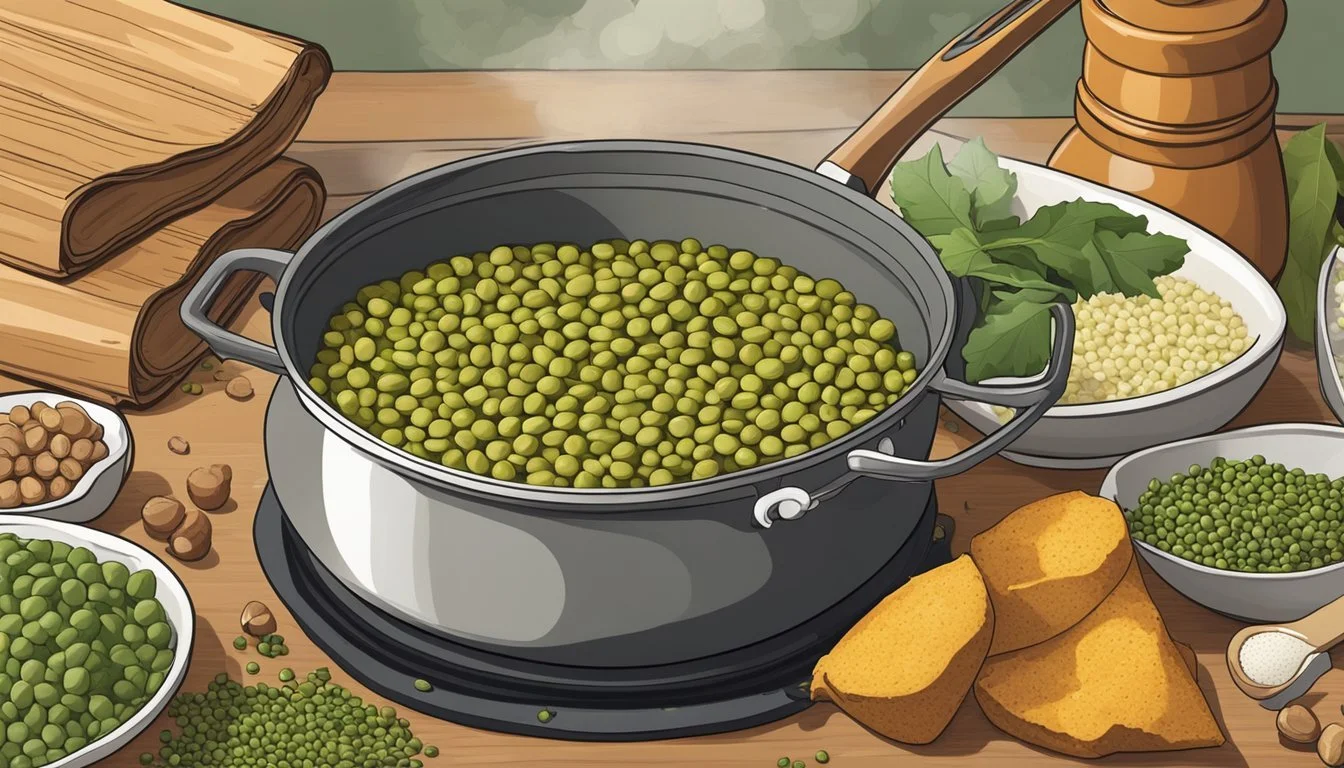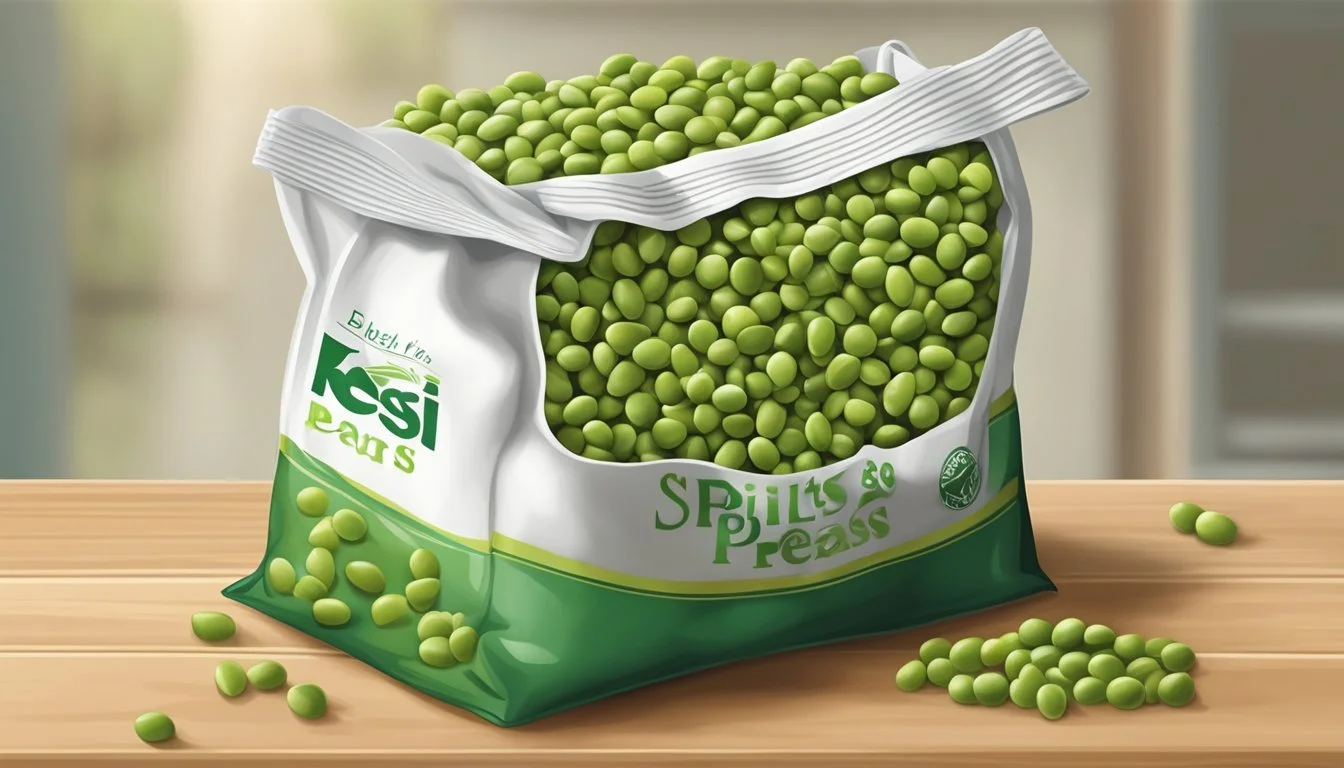Does Split Peas Go Bad?
Understanding Shelf Life and Storage
Split peas, like many dry legumes, have a long shelf life when stored properly. Even though they are dried, they can still go bad if exposed to moisture or pests. When stored in a cool, dry place in an airtight container, split peas can last for several years without losing their nutritional value.
Packed with plant-based protein and fiber, split peas are a powerhouse of nutrition, offering essential vitamins and minerals such as iron and vitamin C, while being low in fat and calories. The benefits make them a staple in many households. Despite their durability, it's important to check for any signs of spoilage such as an off smell, discoloration, or presence of insects before cooking.
Ensuring that split peas are stored correctly not only preserves their shelf life but also their nutritional benefits, providing a great source of carbohydrates and protein for anyone looking to maintain a healthy diet. Remember, proper storage is key to keeping these legumes fresh and beneficial for your meals.
Understanding Split Peas
Split peas are a type of legume that come in two main varieties: green and yellow. They are valued for their nutritional benefits and versatility in cooking.
Types and Nutrition
Green split peas are vibrant in color and have a slightly sweet flavor. Yellow split peas are milder and earthier in taste. Both types are high in protein and fiber, making them an excellent choice for a balanced diet.
Split peas are gluten-free and rich in vitamins and minerals like vitamin B, iron, and magnesium. They are also low in fat and help in maintaining cardiovascular health due to their high fiber content. Compared to lentils and chickpeas, split peas are distinct for their split appearance, aiding quicker cooking times.
Cooking Basics
Before cooking, rinse split peas to remove any debris. Soaking is not required, which sets them apart from other legumes like beans. For optimal texture, there are varied cooking methods:
Stovetop: Boil in water for about 45 minutes until tender.
Slow cooker: Cook on low for 4-6 hours.
Pressure cooker/Instant Pot: High pressure for 15 minutes.
These methods ensure the peas soften properly, leading to a creamy texture suitable for soups, stews, and purees. Cooking times may vary based on the appliance and recipe, but ensuring they are fully cooked is essential for a pleasing texture and flavor.
Preserving the Quality of Split Peas
Ensuring the quality of split peas over time involves understanding the factors that affect their shelf life and employing proper storage techniques to prevent spoilage.
Shelf Life Factors
Shelf life of dried split peas can last from 2-3 years under optimal conditions. Key factors that impact their longevity include temperature, humidity, light, and exposure to oxygen.
Temperature: Storing dried split peas in a cool, dry place is crucial. Cooler temperatures, especially between 40 and 70 degrees Fahrenheit (4-21 degrees Celsius), extend their shelf life.
Humidity: High humidity can lead to mold growth and spoilage. Keeping moisture levels low by using airtight containers helps maintain quality.
Light: Exposure to light can degrade nutrients and quality. Opaque packaging or storage in dark areas helps.
Oxygen: Oxygen exposure can cause spoilage. Oxygen absorbers or vacuum-sealed methods are useful in prolonging shelf life.
Proper Storage Techniques
Airtight Containers: Storing split peas in airtight containers minimizes exposure to moisture and air, preventing spoilage.
Original Packaging: If the package is unopened and airtight, it can be effective. Once opened, transfer to a sealed container.
Location: A cool, dry place away from direct sunlight is ideal. Pantry shelves or kitchen cabinets can work well.
Freezing: For extended storage, split peas can be frozen. Use freezer-safe bags or containers to protect against freezer burn and moisture.
#10 cans and Mylar Bags: These containers are excellent for long-term storage, lasting up to 20-30 years with the oxygen removed.
Refrigeration: Short-term storage in a refrigerator can also help, especially in humid climates. Store in airtight containers to avoid condensation.
Employing these techniques ensures that split peas remain safe and nutritious for as long as possible.
Identifying Signs of Spoilage
When determining if split peas have gone bad, it is essential to look for specific indicators including visual, textural, odor, and taste changes. Each of these aspects can provide clear signs of spoilage, ensuring food safety.
Visual and Textural Changes
Spoiled split peas often show visual and textural changes. Check the color of the peas; they should maintain a consistent green or yellow hue. Any discoloration, such as brown or black spots, indicates spoilage. Additionally, growth of mold is a clear sign that the peas have gone bad.
Texture is another critical factor. Normal split peas should be hard and dry. If they feel excessively soft, mushy, or sticky, they are likely spoiled. Always inspect both raw and cooked peas for these signs. Proper storage in a cool, dry place in an airtight container can prevent many issues.
Odor and Taste Detection
Odor plays a significant role in identifying spoiled split peas. Fresh split peas have a mild, earthy smell. If there is a rancid, sour, or unusual odor, the peas should be discarded immediately. This odor change typically means that the peas have reached or passed their expiration date.
Taste is the final, but crucial, test. While tasting is less advisable if other spoilage signs are present, cooked split peas should have a pleasant, earthy flavor. A sharp, bitter, or off taste indicates spoilage. For food safety, it is better to trust your senses and discard the peas if any doubt arises about their condition.
Health and Nutrition
Split peas are not only versatile in recipes but offer a wealth of health benefits. They provide essential nutrients and support various aspects of health through their densely packed nutrient profile.
Dietary Benefits
Split peas are high in fiber and protein, making them an excellent choice for maintaining a healthy diet. Each serving typically contains a significant amount of potassium and magnesium, which support muscle function and cardiovascular health.
In addition, split peas contain vitamins A and B. Vitamin A aids in immune function and vision, while B vitamins assist in energy production and red blood cell formation. Iron and zinc present in split peas are crucial for oxygen transport in the blood and immune health, respectively.
Managing Health Concerns
Eating split peas can contribute to weight management due to their high fiber and protein content, which promote feelings of fullness. The fiber also helps in regulating cholesterol levels, potentially reducing the risk of heart disease.
Split peas are naturally low in fat, cholesterol, and sodium, making them a heart-friendly food choice. They contain complex carbohydrates, providing steady energy without spiking blood sugar levels, which is beneficial for those managing prediabetes or diabetes. Furthermore, being a gluten-free legume, split peas are a suitable option for people with gluten sensitivities or celiac disease.
Creative Uses in Cooking
Split peas are a versatile ingredient that can enhance various dishes, from hearty soups to refreshing salads and tasty dips.
Variety of Dishes
Split peas are often used in split pea soup, a classic comfort food. This soup typically includes ingredients like carrots, barley, and herbs to boost its flavor and nutritional value.
Beyond soups, split peas can be the base for a nutritious salad. Combining them with green lentils, chickpeas, and a light vinaigrette creates a protein-packed, healthy meal.
For a unique twist, split peas can be turned into a flavorful dip. Blend cooked split peas with garlic, lemon juice, and olive oil, similar to hummus, to make an original dip for vegetables or pita bread.
Combining with Other Ingredients
Incorporating split peas with other ingredients can elevate a dish. When combined with barley, they create a hearty and satisfying soup with a rich texture.
Adding carrots and potatoes brings sweetness and additional nutrients, enhancing both flavor and color.
In salads, mixing split peas with quinoa or bulgur adds a variety of textures and boosts the nutritional profile.
For stews, pairing split peas with green lentils can enhance the dish's depth, providing a hearty base that sustains slow-cooked flavors.
Using split peas creatively can transform everyday meals into extraordinary culinary experiences.
Avoiding Common Pitfalls
Proper handling, storage, and preparation of dried split peas can prevent food safety issues and extend their shelf life. These tips will help you avoid common pitfalls in handling and contamination prevention.
Handling and Preparation Mistakes
Avoid common handling mistakes by ensuring split peas are stored in tightly sealed containers. This prevents exposure to moisture and pests. Before use, rinse split peas thoroughly under running water to remove any dust or debris that can harbor bacteria or insects.
Soaking split peas, unlike beans, is optional for quicker cooking. However, if you choose to soak, use clean, cold water and don't leave them soaking for more than 24 hours to prevent fermentation and bacterial growth. When cooking split peas, ensure they reach a soft consistency, boiling them adequately to kill any harmful bacteria.
Pest and Contamination Prevention
To avoid pests and contamination, store split peas in a cool, dry area, ideally between 40 and 70 degrees Fahrenheit. Use airtight containers like Mylar bags or #10 cans, possibly with oxygen absorbers, to extend their shelf life significantly.
Inspect stored split peas for signs of pests, like small holes or bug presence. If any contamination is detected, discard the whole batch to avoid health risks. Keep storage areas clean and dry to deter pests, and consider periodic checks to ensure the integrity of the storage conditions.








